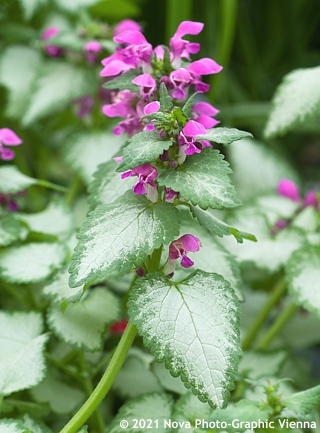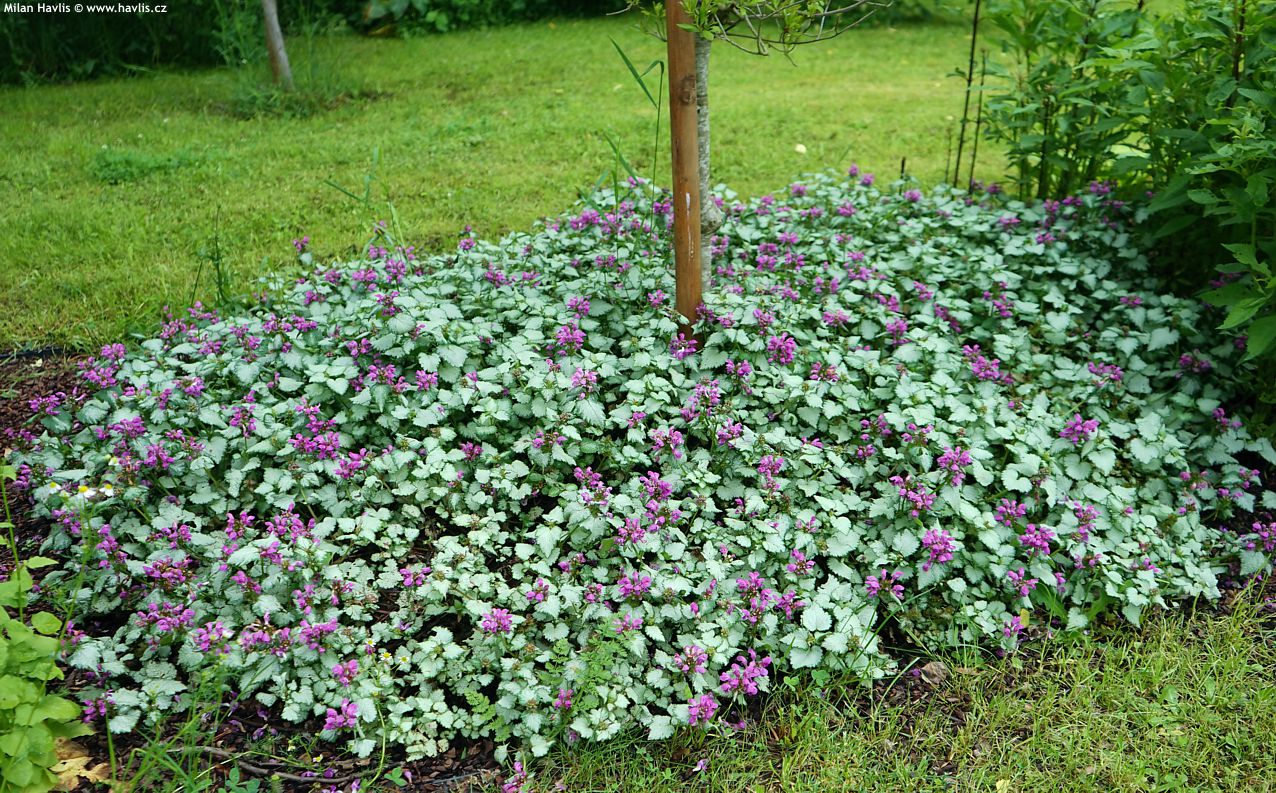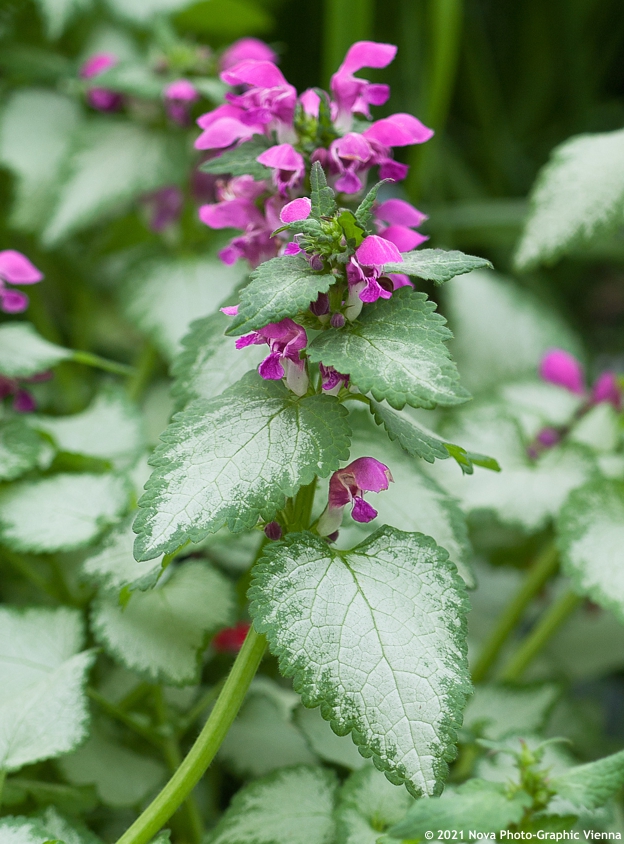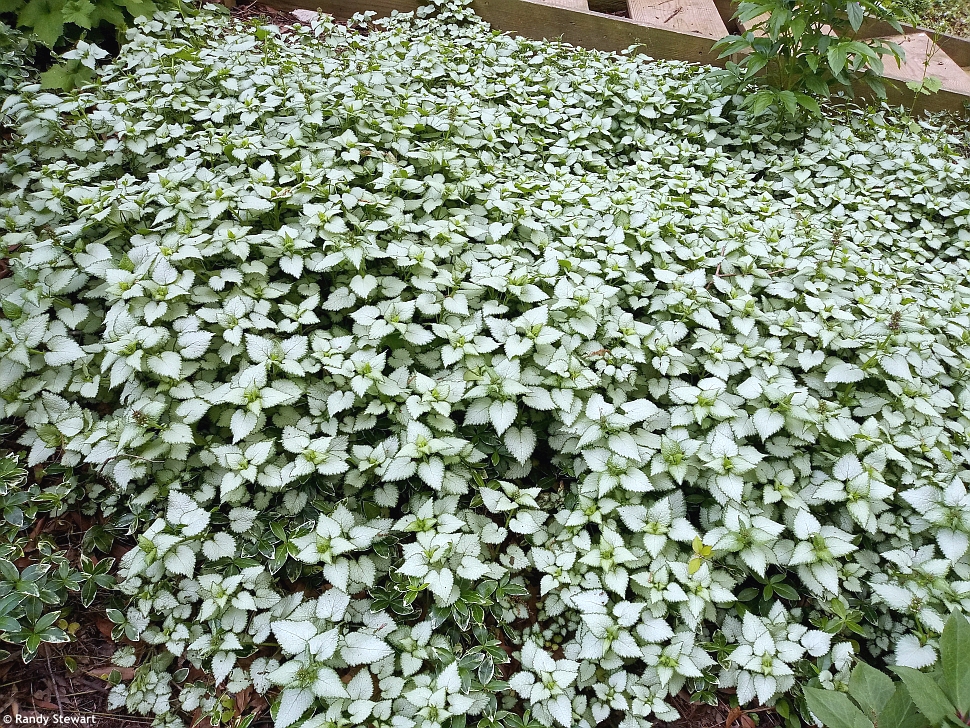Lamium maculatum 'BEACON SILVER' spotted dead nettle
size/type
low or groundcovering,low perennial
usual height
0,1-0,1m
usual width
0,5-1m
leaves
deciduous broadleaf
colour of leaves
flowers
showy
colour of flowers
blooming time
June-September
location
full sun to shade
soil type
any (acidic to alkaline)
soil moisture requirements
evenly moist but well-drained
USDA zone (lowest)
3 (down to -40°C)
winter protection
for zone 5+6

for zone 7

categorized
Lamium
Did you ever wonder why dead nettle is called dead? Simple fact: unlike the true nettle (stinging nettle) it lacks the stiff hairs releasing stinging chemicals. And although spotted nettle is a perennial from the ‘dead group’, looking at its beautiful foliage and flowers it is so alive. It comes from Central, South, and East Europe, and Asia where it is usually found at the woodland edge or growing under tall trees releasing filtered sunlight.Description of the plant:
Beacon Silver is a renowned and popular spotted nettle variety cultivated for its attractive foliage and purple pink flowers. They are small, two-lipped, and appear in terminal whorls atop only about 10-20 cm tall stems from June until September. Leaves are heavily marbled silver with green margins. They are commonly deciduous but may be evergreen in warm climates of USDA zone 7 and 8. The plant makes prostrate, spreading branches which create a colourful groundcover.The variety was found by Beth Chatto from Colchester in England in her customer’s garden. She named it Beacon Silver for its resemblance to bright silvery light of seacoast beacons, shining through the darkness of the night, just like this humble perennial brightens up any dark corner of your garden. It was introduced in 1976.
Spotted nettle requires little or no care. You can trim it in spring with a mower or cut it back to the ground. It loves partial shade but grows reliably in full shade as well as in full sun, too, provided adequate moisture. It is not picky about soil pH, it only dislikes heavy or clay ground. Once established it can cope with dry shade. It is hardy to about -45 °C (USDA zone 3).
Last update 12-10-2021
QUICK PRICE OVERVIEW
CURRENTLY SOLD OUT
















